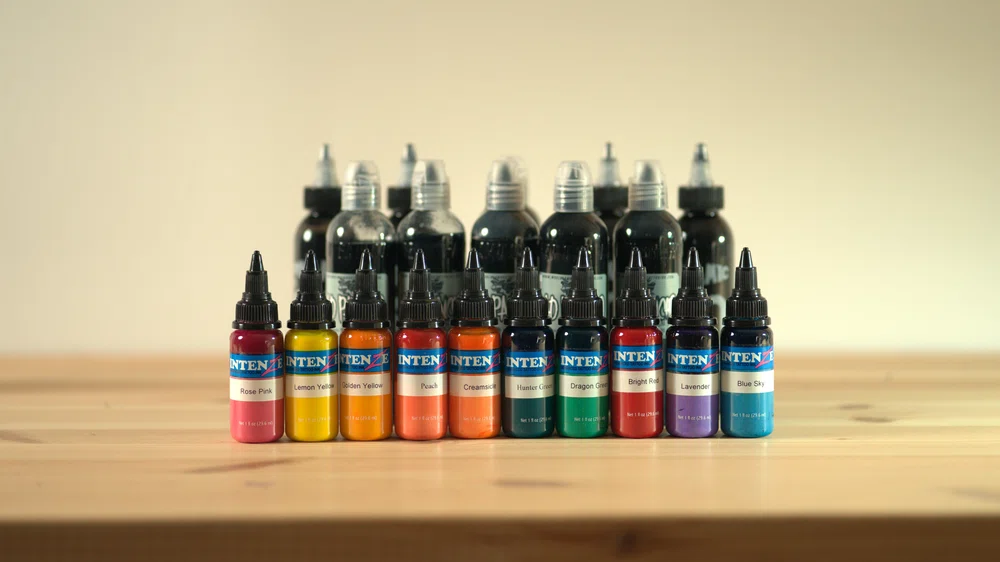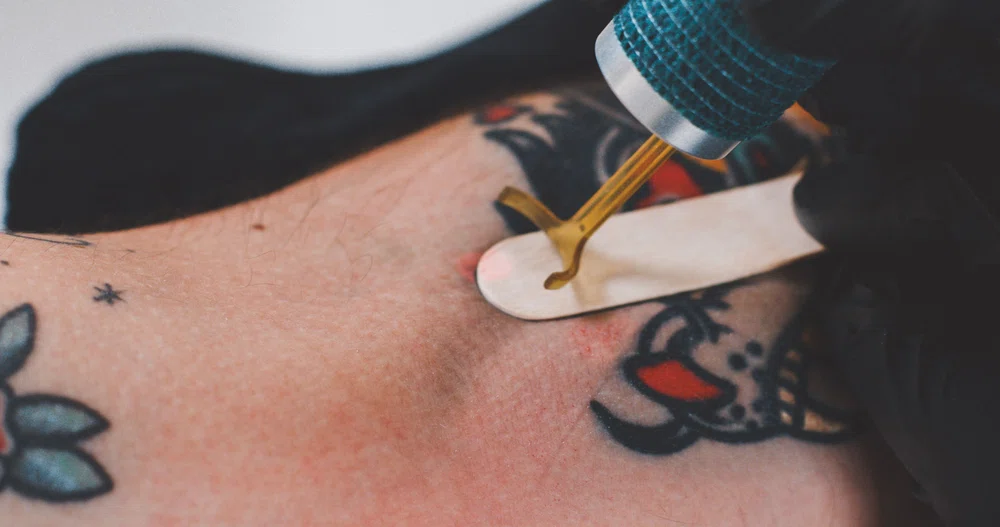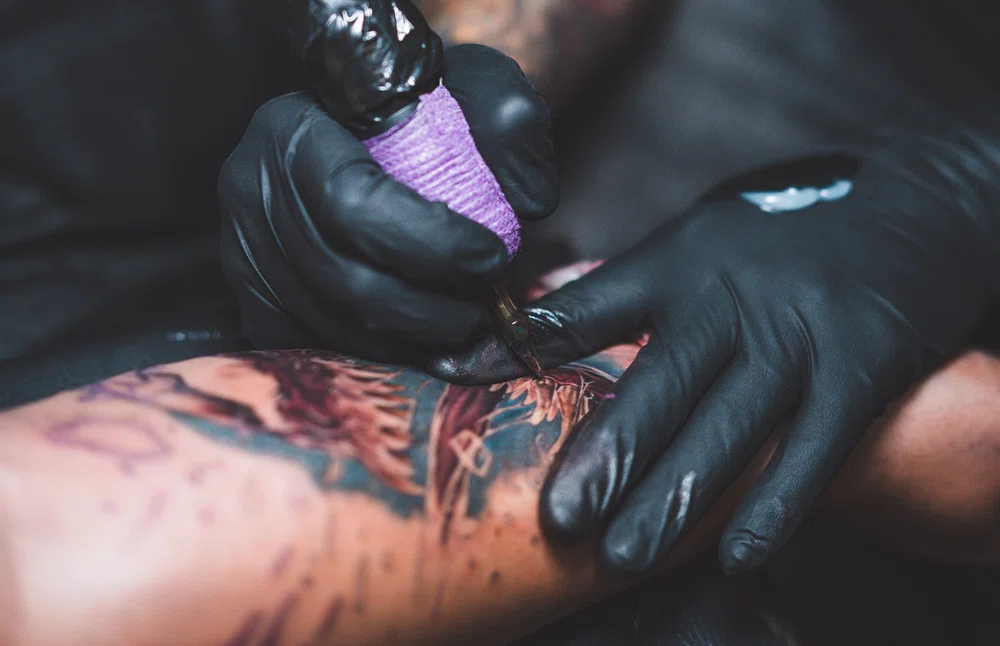How does the skin react to the healing process of a tattoo?
What every tattoo professional should know to achieve good and lasting results
04 January 2024
Dedicating yourself to tattooing requires a considerable amount of essential knowledge. It is not enough to merely know how to make a few lines on the skin and observe the outcome. Starting by the 3 fundamental pillars of tattooing is the first step… The second, delving into each stage of the tattooing process.
Today, we will focus on the healing process of a tattoo and the skin’s behavior before and after the ink is applied, at all levels.
A must-have knowledge if you wish to achieve long-lasting, high-quality results. In the end, a tattoo is basically a wound, with everything it implies at a biological level. Knowing what happens both externally and internally is fundamental for anyone practicing this intricate yet captivating art form.
What happens to the ink once it enters the body? How does it lodge in our bodies forever? And what happens internally after the healing process?
To answer all these questions (and more), we will dive into the anatomy of the skin, from the outermost to the deepest layer, for you to know the keys for executing a WELL-DONE tattoo.
By the end of this article, you will have learned something that only those who take this profession seriously know.
Shall we?
The external healing process of a tattoo
Let's begin with the tip of the iceberg, what we see on the outside when a tattoo is healing.
- In the first three days: The tattooed area swells and remains sensitive for a while.
- After the seventh day: What we know as a "soft scab" is created. Exactly... the one we should not peel, under any circumstances!
- In the second or third week: The skin begins to regenerate and the previously shaved hair grows. And that's when that unbearable itching that makes us so desperate begins.
Then comes the best part, the skin calms down, and we can now show off our tattoos comfortably; always by taking care of it from damaging factors (like the sun), of course! Being aware of precautions like this is essential to be able to transmit it to your clients. Pass by this article to learn more in detail about how to take care of a healing tattoo.

So far, nothing new, surely everything is very familiar to you... But now comes the most curious thing, what happens inside the skin.
The internal healing process of a tattoo
On the outside, everything sounds simple, but what happens underneath that tattoo? How does the skin defend itself against such a procedure? Well, perhaps we'll have to make ourselves tiny and explore how the skin reacts to the foreign ink.
Let's go one step at a time, and see what our largest organ is made up of.
The 3 main layers of the skin:
Epidermis
It’s the outermost layer of the skin. It mostly wraps, protects and waterproofs the surface of our body. Besides acting as a natural barrier against infections.
Dermis
It’s the layer located beneath the epidermis, connected by a basal membrane. It is primarily composed of connective tissue and protects the body from stress and tension.
Its composition is way more complex. Without going into too much details, it houses numerous nerve endings that contribute to the sense of touch and heat. And it's full of several glands and vessels, both lymphatic and blood, which are responsible for nourishing and eliminating waste.
Hypodermis
Also referred to as subcutaneous tissue. Technically, this layer is not part of the skin, but goes underneath it.
Its main role is to connect the skin to the underlying bones and skeletal muscles, while also providing pathways for nerves and blood vessels. It consists of different types of tissues and contains fibroblasts, macrophages, and adipocytes.
Above all, stay with the so-called macrophages, which are the protagonists of the healing process.

How does the body react to tattoo ink?
When we tattoo, we go through the first layer (epidermis) to finally lay ink in the second (dermis). What does this mean for our bodies?
Imagine the needle entering at superhuman speed, injecting something strange into our organism. Logical that it wants to defend itself!
And so it does. Here’s what happens...
Once the ink is injected into the dermis, it is absorbed by the capillaries present in that layer. However, not all of the ink reaches its intended destination. In fact, it is quite common for a tattoo to experience some pigment loss over time. This happens because our immune system responds to tattoos automatically, sending macrophages and dendritic cells to phagocytize the ink particles.
Phagocytize? What is that?
In simple terms, the process by which cells "capture" and attempt to eliminate foreign substances like tattoo ink is known as phagocytosis. This biological process plays a significant role in the long-term retention of ink on our skin.
Now, let's grab a microscope and examine this process in more detail...
How phagocytosis works step by step
- The injuries caused by the needle trigger a repairing process in the affected tissues.
- The immune system recognizes the ink as foreign and activates a defense plan.
- Macrophages and dendritic cells begin to engulf and destroy the ink particles.
- The smaller ones are carried by the blood circulation and drained by the lymphatic system.
- But all particles that could not be eliminated end up trapped in the extracellular matrix.
- So, the fibroblasts enter the scene to repair the connective tissue and create the scar tissue, creating a collagen barrier that isolates what remains of ink, thus lodging it forever in our body.
Now, you may wonder why exactly is it that tattoos don’t fade over time?
The reason why tattoos are permanent

The biological process that we have just explained is not quite efficient against ink for two reasons:
- The ink components are not usually biodegradable, which hinders the macrophage’s work and forces it to store in its cell interior what it has not been able to destroy.
- The amount of ink that enters our body is much greater than the size of the macrophage, making the movement of this cell defender impossible.
But then, why does the appearance of tattoos change over time? Well, because this doesn't exactly end there…
Factors that influence the final appearance of a tattoo
- Although the original macrophages die, over time, the body sends new cells to patrol the area to try to reduce the foreign ink particles.
- Similarly, the process of tissue remodeling affects the appearance of the tattoo over time. As the scar matures, the skin contracts and redistributes, often blurring or changing the shape of the tattoo.
- Added to this is exposure to ultraviolet rays from the sun and other environmental factors, which gradually degrade the pigment and cause discoloration.
Curious fact: did you know that our body is the one that removes the tattoo, and not the laser itself?
Let us explain it to you briefly since it’s an interesting fact that few of us know and almost all of us confuse.
The role of the skin in laser removal

At first sight, it may appear that the laser removal technique removes ink through pulses of light. But what it actually does is to assist the body by acting on the pigment to break it into smaller particles.
And then the body reactivates the biological process we discussed earlier to naturally eliminate these smaller ink particles.
This is why multiple sessions are necessary to achieve a gradual reduction in the tattoo's appearance. It’s such a complex process that it varies from client to client since, beyond pigment, all skins differ and each individual's immune system behaves differently.
Would you have guessed it was like this?
Tips for tattooing on the correct skin layer
You deserve an award for putting up with all this biology class, so here it goes! Don't go now that we're getting practical.
How far should a tattoo needle go into the skin?
Now that we’ve learned the cellular processes involved, we can better understand why tattoos should be placed in the second layer of the skin, the dermis. As the epidermis is continuously regenerating, the ink would never settle there.
On the other hand, we shouldn’t go beyond boundaries and penetrate the hypodermis. As the skin would complain more and, therefore, your work would be jeopardized.
A great way to understand more tangibly how far we should go with the needle without harming any skin (nor compromising the final result) is by practicing over synthetic skin as much as you can before stepping up to human skin.
This medium, though it will never be like tattooing real skin, is still the most effective when it comes to learning techniques, trying effects, and getting your hand used to the machine.
Want to add a few tricks to your toolkit? In our new Workshop: Basic Black & Gray Technique, Coreh López delves deep into all it takes to master realistic tattooing through a series of hands-on practices over synthetic skin that take you from the simplest semi-realistic style to full-realistic tattooing. An update freshly out of the oven that we've made specially to help you become a better artist. Don't forget to check it out!
Recapping:
- If you tattoo too superficially, the tattoo will look good at first, but after the healing process, it will eventually fade.
- And if you tattoo too deep, the tattoo will not only be more painful for your client, but the final result will not be good and you will be at risk of generating a blowout in the tattoo.
Well, now it doesn't seem so irrelevant to know the scientific part of tattoos, right?

Knowing the biology of the skin makes you a better tattoo professional
Keep in mind that the skin is a living organism, and it never responds the same to ink. So, It is not enough to know about tattooing techniques; but it is crucial to thoroughly understand how the canvas (our skin) may react.
Skins are as diverse as people! Some will be more docile, while others will catch you off guard. Some skins are very sensitive and others are as tough as that of a rhinoceros. What is more, skin tones range from light to dark. But this is a subject for another article. As a matter of fact, we have already written one about it… Pass by to learn how different skin types react to inks.
In short, the greater the knowledge you have about tattooing, the better the results you will achieve as a professional.
This profession is complex, and many factors influence your performance. So, the more you reduce the number of surprises, the less upset you will get.
Luckily, today, we have many more tools to do our work better. So, if with this article, you have learned how to avoid ruining the skin of your clients, can you imagine all that you can learn inside our professional tattooing courses?